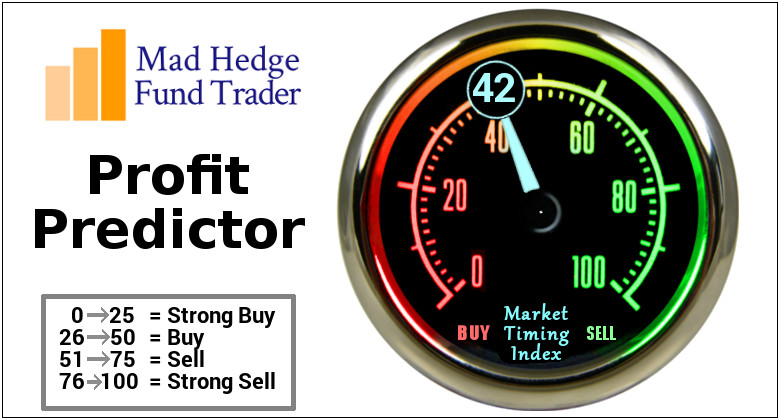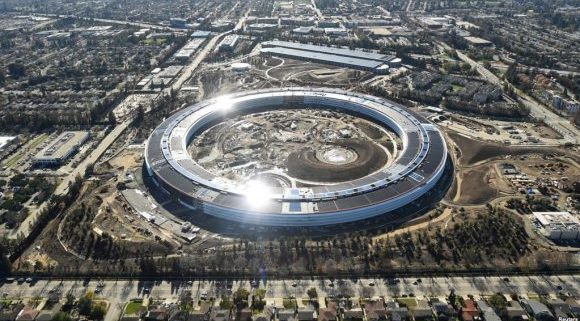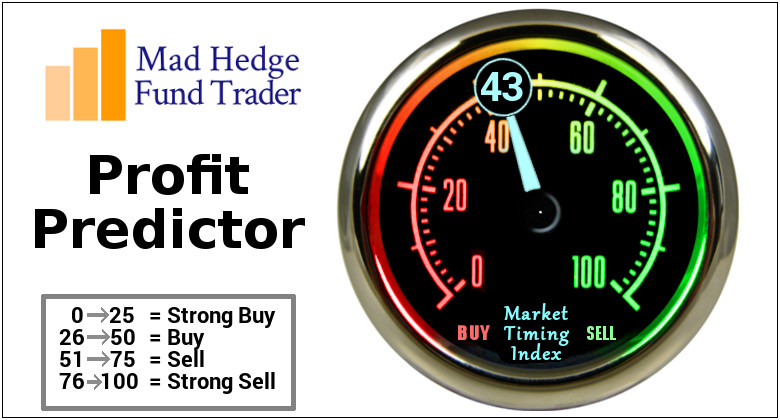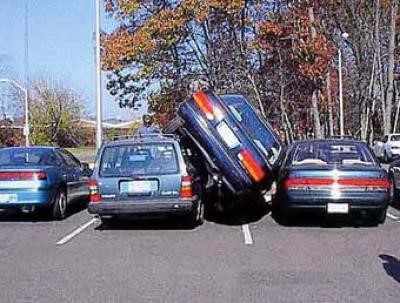When John identifies a strategic exit point, he will send you an alert with specific trade information as to what security to sell, when to sell it, and at what price. Most often, it will be to TAKE PROFITS, but, on rare occasions, it will be to exercise a STOP LOSS at a predetermined price to adhere to strict risk management discipline. Read more
While the Diary of a Mad Hedge Fund Trader focuses on investment over a one week to six-month time frame, Mad Day Trader, provided by Bill Davis, will exploit money-making opportunities over a brief ten minute to three day window. It is ideally suited for day traders, but can also be used by long-term investors to improve market timing for entry and exit points. Read more
Global Market Comments
June 1, 2018
Fiat Lux
SPECIAL REAL ESTATE ISSUE
Featured Trade:
(TUESDAY, JUNE 12, 2018, NEW ORLEANS, LA, GLOBAL STRATEGY LUNCHEON),
(WHY YOUR FANG STOCKS ARE ABOUT TO DOUBLE IN VALUE),
(FB), (AAPL), (NFLX), (GOOGL), (LMT), (ROKU),
(HERE IS YOUR TOP-PERFORMING INVESTMENT FOR THE NEXT FIVE YEARS),
(ITB), (PHM), (KBH), (DHI), (AVB), (CPS)
Come join me for lunch at the Mad Hedge Fund Trader's Global Strategy Update, which I will be conducting in New Orleans, LA, on Tuesday, June 12, 2018. An excellent meal will be followed by a wide-ranging discussion and an extended question-and-answer period.
I'll be giving you my up-to-date view on stocks, bonds, currencies, commodities, precious metals, and real estate. And to keep you in suspense, I'll be throwing a few surprises out there, too. Tickets are available for $268.
I'll be arriving at 11:30 AM, and leaving late in case anyone wants to have a one-on-one discussion, or just sit around and chew the fat about the financial markets.
The lunch will be held at an exclusive downtown restaurant. The precise location will be emailed with your purchase confirmation.
I look forward to meeting you and thank you for supporting my research.
To purchase tickets for the luncheon, click on our online store.
The shares of FANGs are all about to double in value in the Silicon Valley if commercial real estate is any indication of the future growth rates.
The group is gobbling up office space at such a prodigious rate that only a vast expansion of their business would justify these massive long-term commitments.
Commercial real estate commitments are one of the most valuable leading indicators of stock performance out there. They show what the companies themselves think are their future prospects.
Apparently, the stock market agrees with me. Technology is virtually the only group of shares moving to new all-time highs in these otherwise dismal trading conditions.
Just this month Facebook (FB) signed a lease for the entire brand new 43-story Park Tower in downtown San Francisco, and that's just to house its Instagram business.
Google (GOOGL) is leasing 39% of the office space in Mountain View, CA. It is currently in negotiations with the nearby city of San Jose to build a skyscraper occupying an entire city block that will house 10,000 tech workers. It also is building another 1 million square feet near an old prewar dirigible landing strip in Moffett Park.
Apple (AAPL) is hogging some 69% of the office space in Cupertino, CA. It is just now moving into its new massive spaceship-inspired headquarters, where 10,000 workers will slave away. The world's largest company is currently on the hunt for a second headquarters location.
Netflix is slowly gobbling up Los Gatos, CA. It was recently joined by the set top device company Roku (ROKU), which is growing by leaps and bounds.
Fruit canning was the original industry of Silicon Valley at the turn of the 20th century, taking advantage of the surrounding peach, plum, and apricot groves. When I was a kid after WWII, defense firms such as Lockheed (LMT) took over, creating thousands of high-paying engineering jobs.
It didn't hurt that Stanford University was spitting distance away, and the University of California was just on the other side of the bay. These two schools supplied the manpower to fuel the hypergrowth ahead.
To say the growth has caused local headaches would be an understatement in the extreme. The San Francisco Bay Area now sports the world's most expensive residential housing. The median San Francisco home price has skyrocketed to $1,334,000 and requires an annual income of $334,000 to support it.
Small businesses such as dry cleaners, nail salons, restaurants, and barber shops have been driven out by soaring rents. It's not uncommon now to go out to dinner only to find a "closed" sign on your favorite nightspot. Your personal assistant now has to travel miles just to get your suits pressed.
As for traffic, forget about it. Rush hour has ceased to exist. Freeways are now jammed a nonstop 12 hours a day in the worst neighborhoods.
Success has its price, and this was never truer than in Silicon Valley.
The New Apple HQ
Where Instagram Now Lives
Mad Hedge Technology Letter
June 1, 2018
Fiat Lux
Featured Trade:
(THE TECHNOLOGY NIGHTMARE COMING TO YOUR CITY)
Is gold your best performing asset for the next five years? Is it high-growth technology stocks? Energy stocks? Or maybe biotech shares?
How about French collectable postage stamps or vintage racing cars?
Nope, you're not even close. I'll give you a hint: You're probably sitting in it.
Yes, the best performing investment you will own for the next five years will most likely be the home you live in.
Psshaww you may say. Perhaps even balderdash! However, if you look at the crucial data that drives this long-ignored sector, my conclusions are unassailable.
If fact, you can pretty much count on your home to appreciate at a 3% to 4% annual rate until well into the next decade, and much more if you are fortunate enough to live on the red hot west coast.
Net out the copious tax breaks that still come with home ownership, and your take home will be even higher than that.
This beats the daylights out of stocks (SPY) (1.84% yield), 10-year Treasury bonds (TLT) (2.85%) and approaches junk bonds (HYG) (5.74%) in terms of the potential returns.
For a start, the Federal Reserve's go-slow policy on interest rate rises is hugely pro housing.
The conventional 30-year fixed home mortgage can now be had for a bargain 4.5%. And many finance their properties with the 5/1 ARMs that I have been recommending, which are currently going for only 3.25%.
Worried about what happens in five years when the interest rate is reset? Just refinance during the next recession, which will almost certainly happen well before then, and you'll probably get a lower rate than you can get now.
That is, assuming you still have a job.
The good news for those homeowners who rely on the floating rates of an adjustable rate mortgage is that this is not a low interest rate decade, but a low interest rate century.
Another positive is weekly jobless claims of 222,000 at 43-year low, and a decade low unemployment rate of 4.0%, meaning that a lot more people have the income with which to purchase homes, far more than only a couple of years ago.
Not only will this be a low interest rate century, it will be a low energy cost century as well. If solar energy costs continue their dramatic rate of improvement, around 50% every four years, it will nearly be free by 2030.
Not only will free energy provide a big underpinning under home values. It will also increase the value of suburban homes where commuting is a major factor.
It gets better.
You know that Millennial of yours who's been living in your basement since he graduated from college?
Go downstairs and take a look. Chances are he probably moved out when you weren't looking, turning his prodigious gaming skills into a high-paying coding job.
What's more, he's now dating a girl. You know, the one with the nose ring, the streak of purple hair, and tattoos up and down both arms?
That leads to family formation. And you know what? The most important trend affecting the economy that no one knows about is that THE UNITED STATES IS ABOUT TO ENJOY ANOTHER BABY BOOM!
That's why new household formations are likely to jump from the current 1.2 to 1.5 million a year in the coming decade.
However, only 1 million homes a year are being built, thanks to the halving of construction capacity in the aftermath of the Great Recession. Subtract from that 250,000 houses a year that get demolished.
Does anyone hear the words "short squeeze"?
That means 85 million Millennials will be chasing the homes of only 65 million Gen Xer's. Here in the San Francisco Bay Area they are showing up at weekend open houses and paying cash for beautiful $3 million homes with great views, writing the check right on the spot.
Americans aren't the only ones buying homes. Some 8% of all the real estate sold in the U.S. in 2017 was to foreign investors, largely Chinese and Hispanics, according to the National Association of Realtors. That is an all-time high. They view U.S. real estate as a great asset protection strategy.
Are you convinced now? Are you ready to jump into the real estate boom and participate more than just through your residence?
Fortunate, there are a number of ways you can achieve this.
You can also go into traditional new homebuilders, such as KB Homes (KBH), Pulte Homes (PHM), and DH Horton (DHI). Another option is to take a basket approach by picking up the iShares U.S. Home Construction ETF (ITB).
See you at the next open house!
I tell people at my strategy luncheons that living in the San Francisco Bay area is like living in the future.
There is an explosion of high tech innovation going on here, and we locals often find ourselves the guinea pigs for the latest hot products.
However, sometimes the future is not such a great place to be.
I learned this the other day when I received a parking ticket in the mail. I didn't recall finding a notice of violation tucked under my windshield wiper in the recent past, so I looked into it.
To my chagrin, I learned that the city is now outfitting its buses with video cameras pointing forward and sideways.
The digital recordings are then transmitted to parking control officers sitting behind computer screens for review. They issue tickets, which are mailed to the registered owners of the vehicles.
San Francisco suffers from one of the worst parking nightmares in the country. The streets were never planned - they just sort of happened on their own during the frenzy of the 1849 gold rush.
They were built to handle the traffic of horses and carriages, and later cable cars, not the crush of traffic we get today.
Sky-high real estate prices have driven millions into the suburbs across the bridges over which they must commute. So, parking has always been in short supply and it is very expensive. When I drive into the city for a Saturday night dinner, sometimes the parking tab is more expensive than the meal.
Newly minted millionaires from tech IPOs are now buying vintage Victorian homes, and then retrofitting garages underneath them. Every time this is done, it eliminates another parking spot on the street to make room for the driveway.
So, while the traffic is increasing, the number of parking spots is actually declining.
The city originally installed the cameras to catch offenders driving in bus lanes during rush hour. When they discovered that the cameras also captured the license plates of illegally parked cars they expanded the program. Last year 3,000 such tickets were issued.
The program has been so successful that the cash-strapped city will greatly expand it this year. And with a great San Francisco track record to point to, the firm selling the system is planning on going nationwide. Soon it will come to a city near you.
Like I said, sometimes the future is not such a great place to be.
Parking in San Francisco Can be Tight
_________________________________________________________________________________________________
Quote of the Day
"A pessimist sees the difficulty in every opportunity; an optimist sees the opportunity in every difficulty," said the late British Prime Minister, Winston Churchill.
Legal Disclaimer
There is a very high degree of risk involved in trading. Past results are not indicative of future returns. MadHedgeFundTrader.com and all individuals affiliated with this site assume no responsibilities for your trading and investment results. The indicators, strategies, columns, articles and all other features are for educational purposes only and should not be construed as investment advice. Information for futures trading observations are obtained from sources believed to be reliable, but we do not warrant its completeness or accuracy, or warrant any results from the use of the information. Your use of the trading observations is entirely at your own risk and it is your sole responsibility to evaluate the accuracy, completeness and usefulness of the information. You must assess the risk of any trade with your broker and make your own independent decisions regarding any securities mentioned herein. Affiliates of MadHedgeFundTrader.com may have a position or effect transactions in the securities described herein (or options thereon) and/or otherwise employ trading strategies that may be consistent or inconsistent with the provided strategies.


















